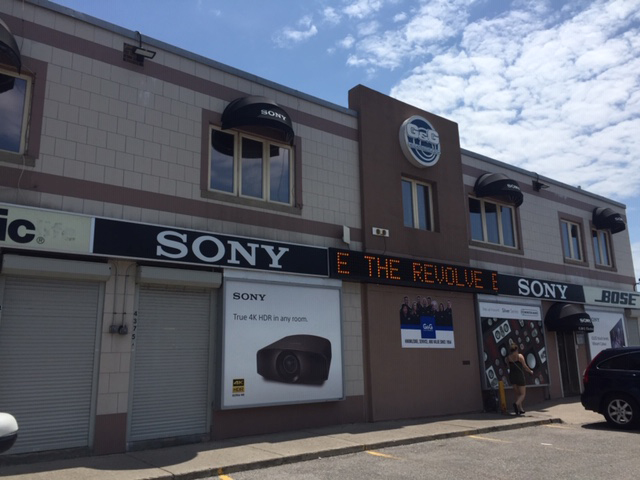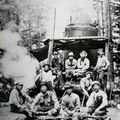Back in the day, when the brain trust of the Japanese Canadian Cultural Centre (JCCC) in Toronto was arguing about a new building, the question of whether the organization was to be a Cultural centre (as it was identified) or a Community centre for what was left of the Japanese Canadian (JC) community. When first thought about, the Nisei decided that the JC community was dwindling and would soon be gone, eradicated by indifference and out-marriage. They thought they saw the writing on the wall. David Suzuki once told an audience of mostly Nisei that the “community” only had 100 years left before it all disappears. As a result, the Nisei felt it was more important to make JCs more acceptable in the mainstream. Sell Japanese culture (Meiji culture specifically) to promote friendship so they would never be a threat again and be interned.
The issue came to the forefront again when the beautifully designed building (by famed Nisei architect Raymond Moriyama) about halfway up the Don Valley Parkway was getting too small and decrepit for the “disappearing” community. An offer came from the Nisei/Sansei group [Momji Seniors Group] campaigning to build a Seniors Home for JCs. They proposed to build it adjacent to the JCCC. It would be of mutual benefit.
The Momiji Group would gain name recognition, while it provides money (in terms of donations and bequests) and volunteers (a constant worry) to help the JCCC rejuvenate its building. The JCCC’s land value would also rise with the addition.
But no, there was serious opposition from the Centre Board and members. “We are a cultural centre, not a community centre” was the argument. Privately, I heard Nisei complain that they didn’t want doddery old people wandering about the property, “embarrassing us”. Certainly, an uncharitable attitude, meanspirited even, lacking foresight considering that many of them were approaching their “golden years”.
In any case, the JCCC Board won since the Momiji Group found construction roadblocks causing the costs to be prohibitive. So, the Momiji Group built its beautiful and large centre in a remote part of Kingston Road, the old highway out of Toronto.
Other centres across Canada must have thought the same. British Columbia has Nikkei Place, identified as a Japanese Canadian Cultural Centre and Museum, and the Steveston Cultural Centre. Winnipeg features the Japanese Cultural Association of Manitoba. There is the Lakehead Japanese Cultural Association, the Hamilton Canadian Japanese Cultural Centre, the Ottawa Japanese Cultural Centre, and the Montreal Japanese Canadian Cultural Centre. It is odd to find in Alberta the Calgary Japanese Community Association and CJCA Cultural Centre, and the Edmonton Japanese Community Centre. Odd too that some ignore the “Canadian” out of their titles. Be that as it may, my guess is that the same debate took place across the country. Sorry if I missed a centre or two.
There are and have been true community centres. Tonari Gumi in Vancouver comes to mind. The Annex, a storefront on the Danforth in the 1980s for another. Both places encouraged JCs to gather to talk, share a meal or snack, drink tea, and engage in programs designed for them. My favourite place was in of all places, an electronics store – G&G Electronics, a store sitting in an obscure strip mall on Kingston Rd. (even farther out than Momiji) near the eastern border of Toronto.

George Tsuyuki and his wife Shiz established Lakeside TV and Repair in 1954. Like most Nisei businesses, it was patronized, at first, by other Nisei. It thrived and when their first son was born, Gary, George changed the name to G&G. The place was the first in the city to sell SONY products. Once Gary came of age and took over, the place became a popular place for Sansei (and others) to fulfill their stereo and TV needs. G&G is a Scarborough and Toronto success story.
What made it important to the JC community was the back room, where an array of television sets sat on display. On any given day (I believe), there gathered several Nisei men who sat on chairs provided by Gary to commune. G&G supplied free coffee, the participants brought food (manju, onigiri with tsukemono, and kakimochi) for all to share. No doubt prepared by their wives. Might have been embarrassing to show up with nothing.
It was a true community centre. What was genuinely remarkable was the lack of complaint by Gary and his wife Cheryl. Even the SONY, Panasonic, and other representatives that hovered around the store didn’t complain. I guess they had no power since G&G moved more product than any other.
The Nisei thoroughly enjoyed themselves, my father-in-law for example who was visiting from Hawaii. He felt so at home there, so welcomed. He found many commonalities with the other Nisei. He said it was like the McDonald’s at Kahala Mall where he had breakfast with his high school classmates just about every morning. It’s too bad those days of friendship and community are gone with the Nisei. Sansei still go but to shop.
The community centre concept may have been rejected by the naysayers at various cultural centres, but I hold faith that groups of JCs will come together and create their own communities … maybe in bowling alleys, curling rinks, hockey rinks, churches and temples, at Bon dances, community picnics and other festivals, like the Powell Street Festival in Vancouver. If David Suzuki is right, then we have 100 years to enjoy ourselves in companionable company. Let’s hope we take advantage.
© 2019 Terry Watada





